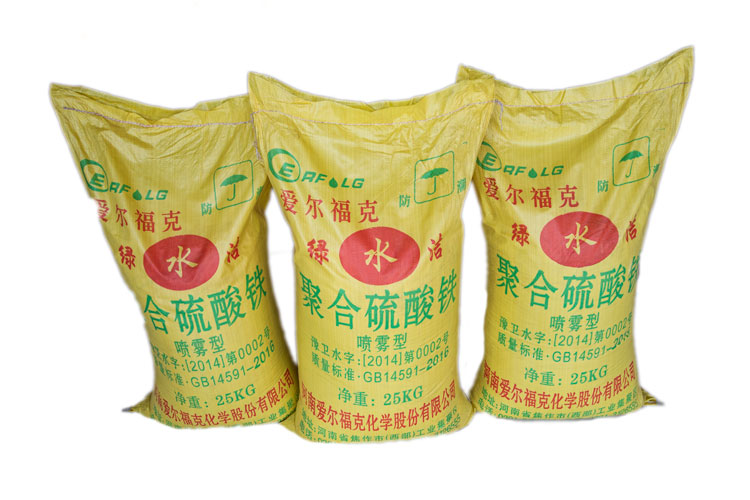Can polyferric sulfate still be used after dampening?
Release time: 2025-09-01
Conditions for continued use after exposure to moisture
- Solid products are not deteriorated when they are moistened
- If the solid polyferric sulfate only lumps due to moisture, but no obvious oxidation or discoloration (such as no yellowing or redness), it can still be used normally after crushing. When using it, it is necessary to strengthen mixing to promote dissolution and appropriately increase the concentration of the solution to ensure the flocculation effect.
- Short-term moisture effects are limited
- If the packaging is damaged for a short time (such as within a few days) and the product is not exposed to high temperature or strong oxidation environment, the loss of active ingredients is small, and it can still be used for non-high precision water treatment scenarios (such as industrial wastewater) after treatment.

II. Situations where it should not be used or should be used with caution
- Severe oxidation deterioration
- If the material is obviously yellow or red after being moist (indicating that ferrous ion is oxidized to trivalent iron), the flocculation activity and pollutant removal rate will be significantly reduced. In this case, it is not recommended to continue using the material.
- Exceeds shelf life and is damp
- The shelf life of solid products is generally 6 months, and that of liquid is 3-6 months. If it has expired and is damp, the active ingredients are easy to decompose and fail, so it should not be used for key water quality treatment.
- Dissolution stability is poor
- If the precipitate increases and the color is abnormal (such as turbid reddish brown) after standing, it indicates that the hydrolysis stability decreases, which may affect the treatment effect.
III. USES AND RECOMMENDATIONS
- Dissolution pretreatment
- Crush the lumps and make a high concentration mother liquor of 10%~30%. After full mixing and dissolution, dilute and add it to avoid the influence of unsolved particles on equipment operation.
- Test effect of small trial
- Before the first use, a small-scale test was carried out on the moist sample to detect the flocculation speed, sedimentation effect and effluent turbidity/chromaticity to ensure that it met the standards.
- Storage improvement measures
- Store in a dry and cool place (temperature <80℃, humidity <75%) with moisture absorber (e.g. silica gel pack).
- Liquid products should be stored in a corrosion-resistant container (such as polyethylene barrel) to avoid freezing or exposure.
- Store in a dry and cool place (temperature <80℃, humidity <75%) with moisture absorber (e.g. silica gel pack).
The solid polyferric sulfate with slight moisture can still be used after proper treatment, but the effect needs to be verified. If oxidation deterioration, expiration or abnormal dissolution occurs, it is recommended to replace the new product. Priority should be given to ensure the stability of water treatment to avoid secondary pollution caused by the failure of the agent.
Related Blog
What are the colors of polyaluminum chloride?
2025-12-15 08:57
Record of customers' visit Thai customers' in-depth visit to AEFK
2025-12-12 10:14
Is ferric sulfate the same as polymeric ferric sulfate?
2025-09-22 10:11



